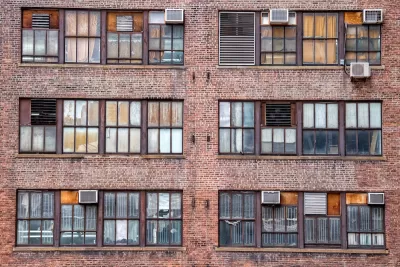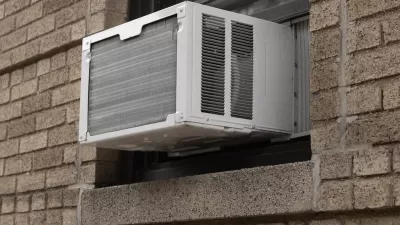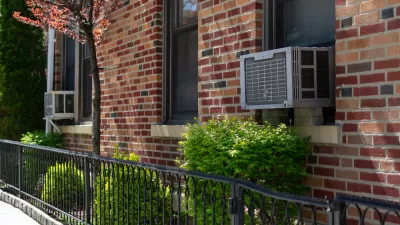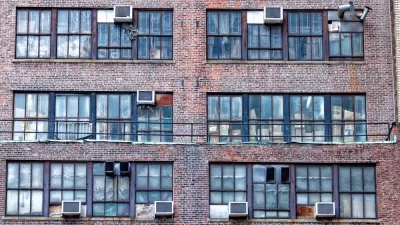Despite hundreds of heat-related deaths every year, the city has no regulations on cooling in residential units.

A New York City Council member is proposing a bill that would guarantee cooling for renters in hot summer months, arguing that a similar law guarantees heating in winter.
According to Council member Lincoln Restler of Brooklyn, “When we looked at the data of who is dying from heat-related illnesses, the single biggest risk factor was not having air conditioning in their homes.”
As Willy Blackmore explains in Word in Black, “The city’s Heat Code became law back in 1918, setting a minimum threshold of 68 degrees for all centrally heated buildings between the beginning of October and the end of May. While the minimum temperature has changed at times over more than a century, it’s a mainstay of being a renter in the city: heat and hot water are provided at the landlord’s expense, with very few exceptions.” The proposed bill would set similar requirements for cooling and include a fee of up to $1,250 per day for noncompliance.
Blackmore explains that cooling units add to landlords’ electricity costs. “Therefore, if a landlord installs a heat pump, or if they have a tenant who uses an A/C window unit, the landlord would be obliged to pay an electric bill for the heat and cooling — separate from what tenants pay for their own electricity use.”
While the majority of New York City residents (91 percent) have access to cooling, the housing units that don’t are concentrated in communities of color like Bedford-Stuyvesant, which Restler represents, and many of the city’s shelters. An average of 350 people die of heat-related causes every year in New York City, though accurate data for heat deaths is often difficult to come by.
FULL STORY: Will New York City Renters Get the Right to Be Cool?

Rethinking Redlining
For decades we have blamed 100-year-old maps for the patterns of spatial racial inequity that persist in American cities today. An esteemed researcher says: we’ve got it all wrong.

Planetizen Federal Action Tracker
A weekly monitor of how Trump’s orders and actions are impacting planners and planning in America.

Walmart Announces Nationwide EV Charging Network
The company plans to install electric car chargers at most of its stores by 2030.

New State Study Suggests Homelessness Far Undercounted in New Mexico
An analysis of hospital visit records provided a more accurate count than the annual point-in-time count used by most agencies.

Michigan Bills Would Stiffen Penalties for Deadly Crashes
Proposed state legislation would close a ‘legal gap’ that lets drivers who kill get away with few repercussions.

Report: Bus Ridership Back to 86 Percent of Pre-Covid Levels
Transit ridership around the country was up by 85 percent in all modes in 2024.
Urban Design for Planners 1: Software Tools
This six-course series explores essential urban design concepts using open source software and equips planners with the tools they need to participate fully in the urban design process.
Planning for Universal Design
Learn the tools for implementing Universal Design in planning regulations.
City of Moorpark
City of Tustin
City of Camden Redevelopment Agency
City of Astoria
Transportation Research & Education Center (TREC) at Portland State University
Regional Transportation Commission of Southern Nevada
Toledo-Lucas County Plan Commissions





























